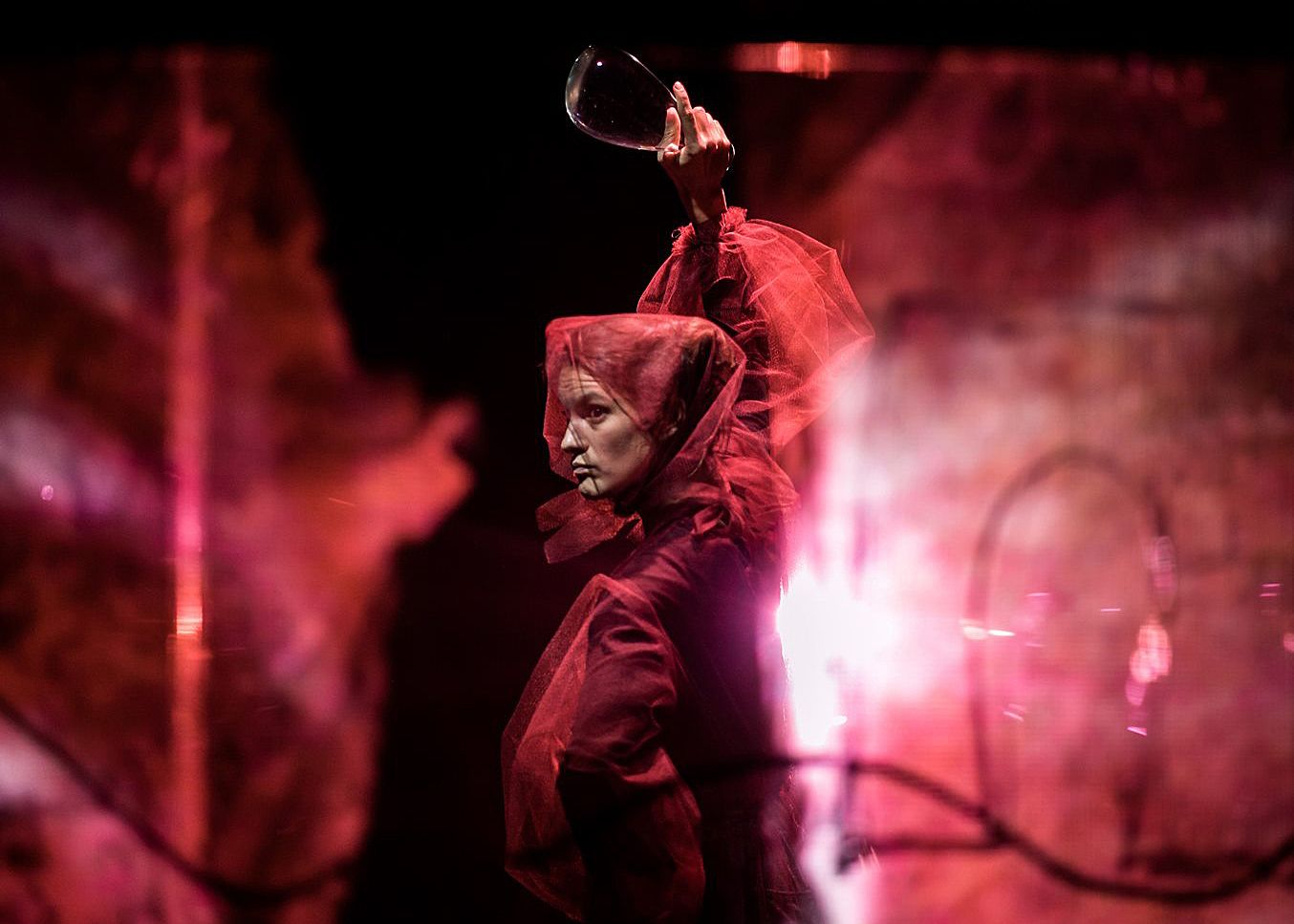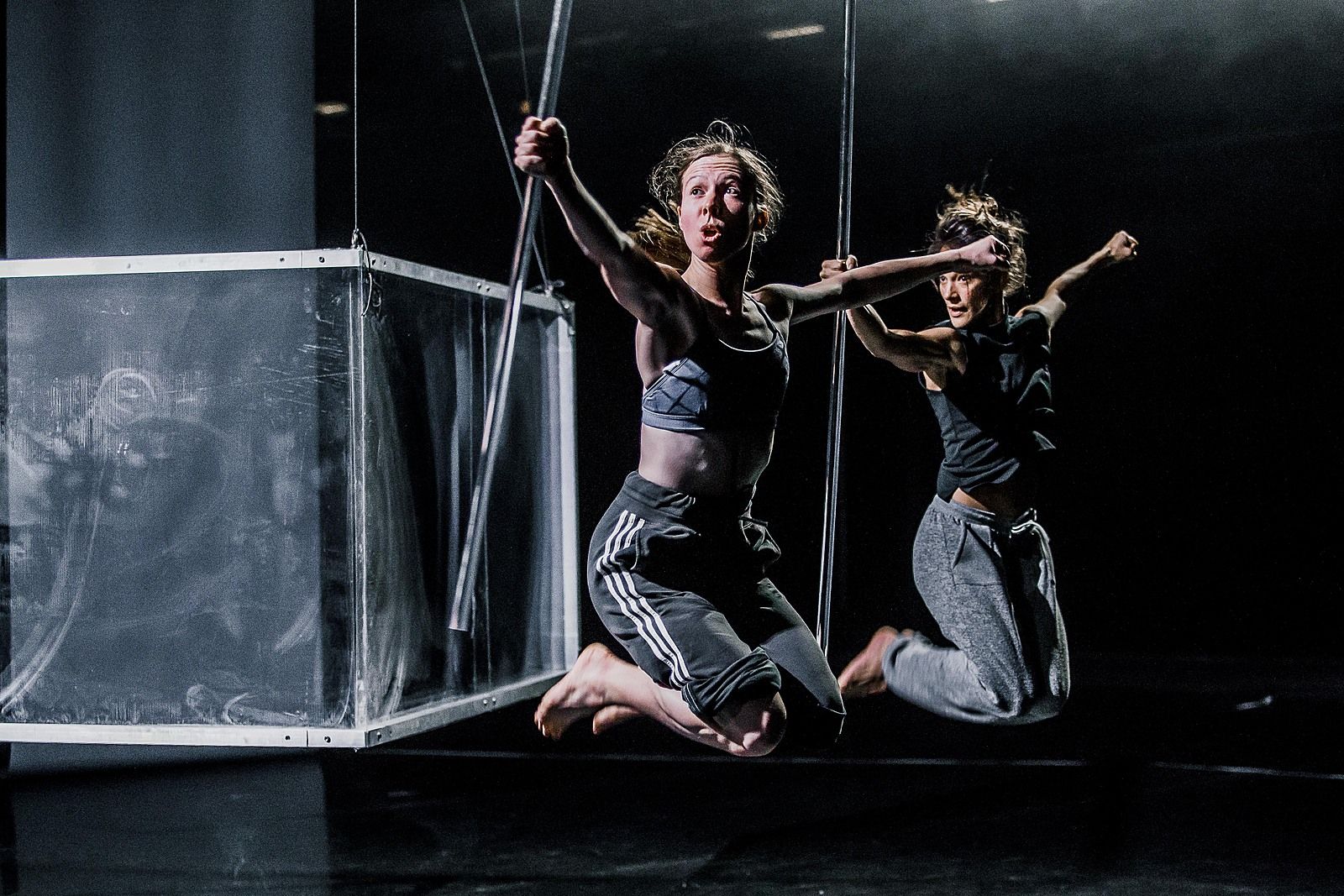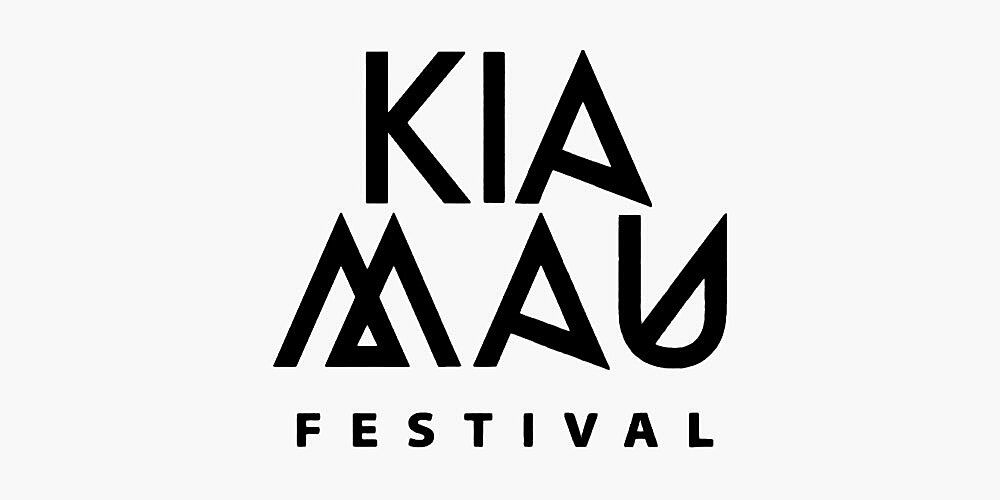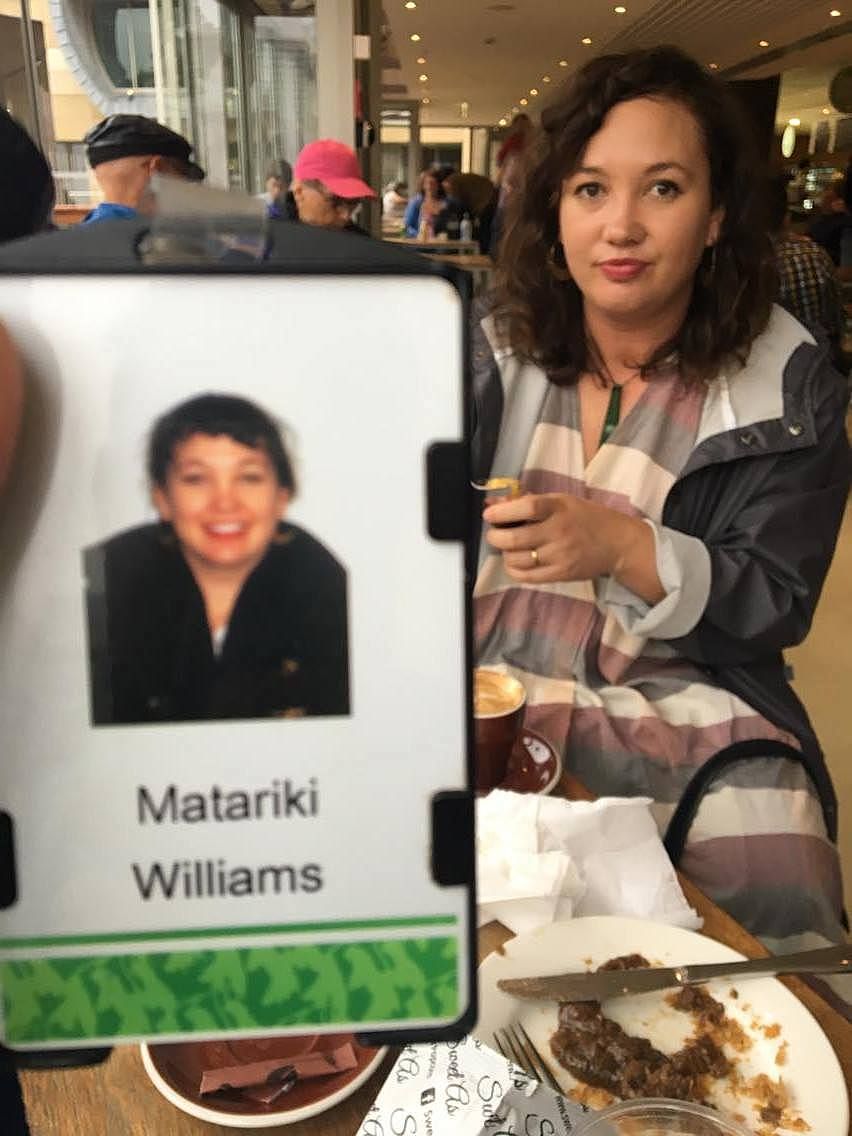The Menace of Memory: A Review of Pōhutu
Choreographer Bianca Hyslop draws upon the story of her grandmother and the force of the Pōhutu geyser in a pulsating new dance work that balances tension and relief. Matariki Williams reviews.
Choreographer Bianca Hyslop draws upon the story of her grandmother and the force of the Pōhutu geyser in a pulsating new dance work that balances tension and relief. Matariki Williams reviews.
At one point during Pōhutu a line crept into my head – ‘memories are a menace’. Like the impact of the show, this will take a lot to unpack.
Pōhutu opens with a slow-moving figure in a dress of transparent red tulle, holding what appears to be a mere made of glass. The mere glints at us as the figure moves forward. With a flash, it disappears.
Choreographed by Bianca Hyslop and performed by Hyslop and co-devisor Rosie Tapsell, Pōhutu is astonishing. Not astonishing in the hyperbolic sense but in a my-heart-is-retreating-further-into-my-chest sense of the word. Taking inspiration from both the geyser Pōhutu in the village of Whakarewarewa and a beloved grandmother, Ramari Rangiwhiua Morrison, who has developed Alzheimer’s, Hyslop – along with Tapsell and performance designer Rowan Pierce – has created a show that bubbles and beats with tension and relief.
An opening act shows Hyslop and Tapsell in a fraught dance, the music alternating between the light plink-plonk of classical music and the echoes of waiata – present but muffled. The dancers reflect the musical changes in their bodies as they gracefully glide around the stage before snapping into movements that are echoes of kapa haka. In parallel to the music, which we never hear the full version of, their movements never quite feel fulfilled. It is this visible tension that held me taut in my seat, captured by the beauty and frustration on display. As a viewer not well-versed in the art of dance, it’s a testament to Hyslop and Tapsell’s movements that the work elicited a reading in which I pondered the menace of memory.
The menace of memories is that they can be burdensome, they can be painful to recall when linked to those we love, those we have lost
Having never had a whānau member experience Alzheimer’s before, and having never had to watch as a loved one forgets great tranches of their life, my reading of the way this experience is depicted is admittedly a grasp at understanding. As a viewer, I felt there was a complicated relationship between Tapsell as memory and Hyslop as Ramari, a symbiosis between the two of them that was co-dependent but stifling. What I mean by the menace of memories is that they can be burdensome, they can be painful to recall when linked to those we love, those we have lost. Watching the interactions between Hyslop and Tapsell, this was ever apparent.
Yet it was not all tense. There is a utilitarian simplicity in the use of a suspended plastic screen, which becomes, in turn, a whiteboard, a surface for projection, and a container of steam reminiscent of the thermal lands of Rotorua. At one point, the soundscape of children’s kōrero i roto i te reo Māori, with the bubbling sounds of the geysers, gives way to the release of underwater noises. Reflecting this, the screen shows scenes of a person penny-diving – a popular pastime for children in Rotorua, where tourists threw coins into the water.
In a YouTube video, Hyslop talks of how her grandmother remembers, and only remembers, Whakarewarewa. It feels that this is what she’s referencing when she and Tapsell take to the screen to draw simple, childlike drawings of a Māori village: washing line, whare, urupā and all. The pull of home, though we may be geographically separated, forcibly removed, disconnected, is unceasing. Pōhutu expresses the muscle memory that turns our eyes, our heart, to home.
In 1986, an exclusion zone was established within a 1.5km radius of Whakarewarewa to prevent the use of private bores for home heating and bathing. This was done because the area had seen a decline in geothermal activity, whereby many geysers, including Pōhutu, had stopped. Further restrictions came into effect in 1999 and geysers dormant for many years have come bubbling back to life. As a settlement, Whakarewarewa has been occupied since 1325. It is land that has been held, and judging by the memories of Hyslop’s grandmother, it is land that holds. Throughout the show, smoke, reminiscent of the steam of Whakarewarewa, is used as a medium through which Ramari remembers and is remembered.
The two closing scenes depict a resolution of sorts for the two characters. They perform in unison with taiaha that, like the mere, look to be made of glass. While their beats are in sync, other gestures and pūkana reveal individuality in their characters, a reflection of what remains.
The final piece of choreography is breathtaking. The red figure returns, and eventually lays her mere at the front of the stage: is this a whakaaro for Ramari? Her tīpuna? Her descendants? Is this her return home? I am reminded of my own nannies, of my own kaumātua, around whose tables I sit listening to their kōrero, songs, silly jokes. Each one of these things they drop and I pick them up hungrily. So, too, am I reminded of the neverending taiāwhio of time that we exist within, along, between, our whānau in front of and behind us. Pōhutu is a masterfully crafted performance, a koha not just for Bianca Hyslop’s own whānau, her own grandmother, but one for all audiences who bear witness to it.
Pōhutu is on 6–8 June 2019 at Hannah Playhouse, as part of Kia Mau Festival (1–15 June 2019)
Feature image: photo by Jinki Cambronero
This piece is presented as part of a partnership with Kia Mau Festival. They cover the costs of paying our writers while we retain all editorial control.



